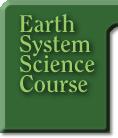Developing a Problem Statement
During
this online course, you are presented with a "scenario"
containing a global event (Week 4--coral reefs, Week 7--tropical
forests, Week 10--ozone, Week 13--global change). These scenarios
contain real-world "situations" in which your team
is asked to make recommendations or offer solutions. In the
early steps of the iterative PBL Model used in this course,
you frequently will not possess sufficient prior knowledge
to address the situation, which means you and your team will
have to share information or review concepts, principles,
or skills as you engage in the problem-solving process. This
activation of prior knowledge has a stage-setting function
that helps lead teams to develop a problem statement later
in the PBL Model. A problem statement is a one or two sentence
idea that clearly identifies what you are trying to solve,
produce, respond to, test, or find out.
As teachers we
often see students in our classrooms wanting to be given a
problem statement, or jumping to a problem statement without
giving much thought to the issues that define the root problem.
The students intuitively jump to the problem statement because
of their need to reach closure quickly and with as little
effort as possible to see if they were "right."
However, using a problem statement as a starting point may
be premature and sometimes misdirected because the students
have not taken any time to think about the problem and to
appropriately structure their information search. In this
course, you and your team will not develop a focused problem
statement until later (Step 6) in the PBL Model. This delay
allows you time to really think about the problem in the scenario
and its issues.
In this particular
course the problem statement should evolve from your ESS analysis
(PBL Step 3), the list of questions you and your team generate
(PBL Step 4), and the investigation you plan (Step 5) in Week A. Since
the problem statement serves as a guide to your information
search, you and your team should post it in team space at
the end of Week A: Teacher as a Problem Solver. During Week
B: Teacher as Model Builder you may rewrite, refine, or alter
your problem statement as necessary, perhaps as many as two
or three times before your team sees a solution or a range
of valid, workable solutions emerge.
Keep in mind that
the problem statement needs to remain clearly related to the
situation presented in the scenario. During Week B, teams need
to think in terms of an iterative, or repeating, process regarding
the gathering of information. For example, you may have to
begin PBL Step 7 (gathering information), then discuss the
emerging information in order to complete PBL Step 6 (developing
a problem statement). As new information comes to light, analyze
it for its reliability and usefulness and also for its impact
on the direction that the problem is taking, as well as its
effect on the very nature of the problem,
Finally, at the
end of Week B, you and your team will present and support
the recommendations or solutions you make. As part of this
Week B team assignment, you and your teammates will communicate
in writing in Teacher as Model Builder your findings and recommendations.
This team product should include the problem statement, questions,
data gathered, analysis of data, and evidence cited as support
for the solutions or recommendations you make.
[
Welcome ] [Earth's
Spheres] [ Earth System Science
] [ PBL Model ] [ Use of Technology
] [ Science as Inquiry ] [ Participation
] [ Assessment Overview ] [ Course
Sections ]
[ Home ] Intro [ Guide
] [ Outline ] [ Classroom
]
HTML code
by Chris Kreger
Maintained by ESSC Team
Last updated July 27, 2000
Privacy
Statement and Copyright©
1997-2000 by Wheeling Jesuit University/NASA Classroom of the Future™. All
rights reserved.
|



